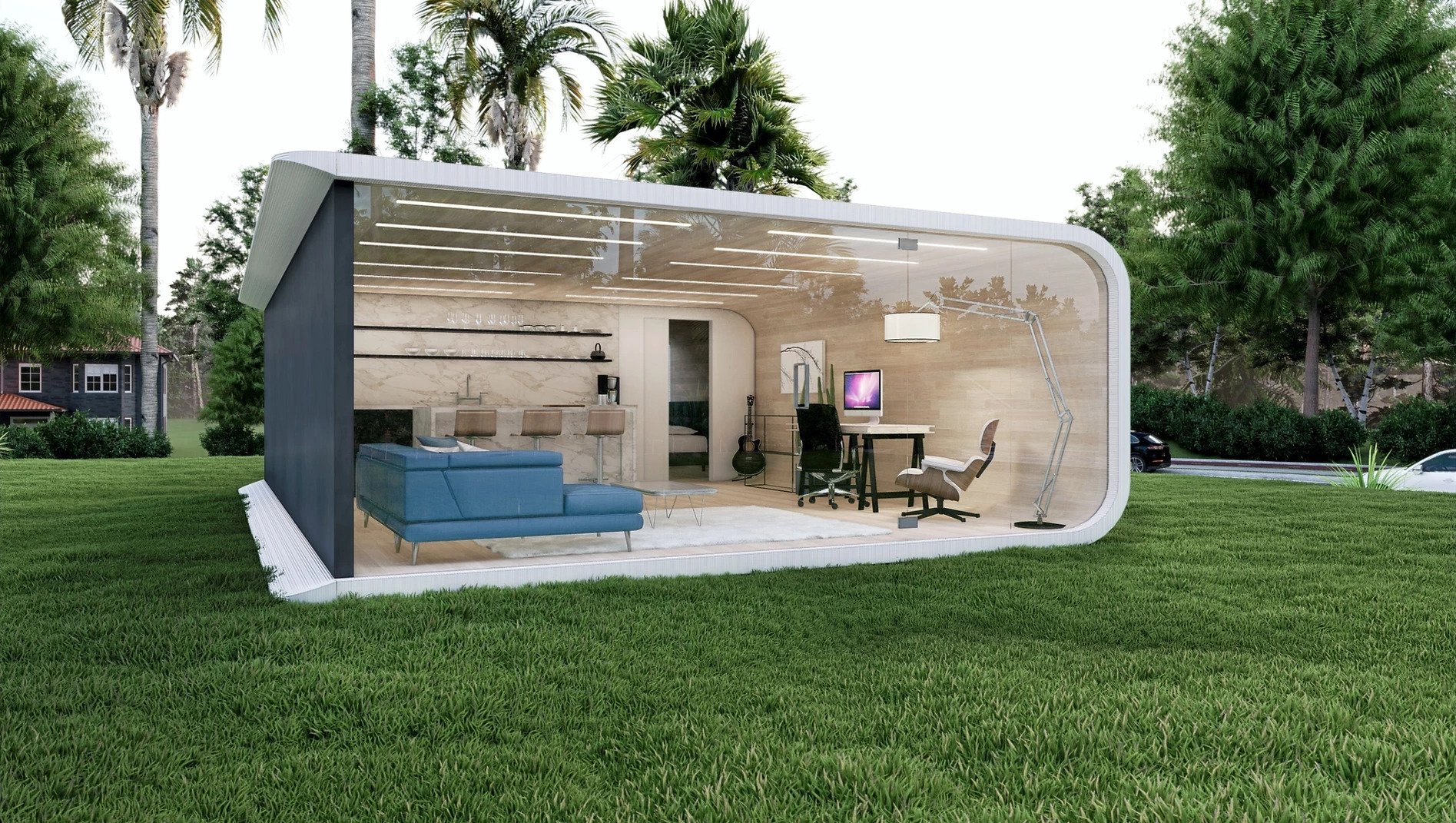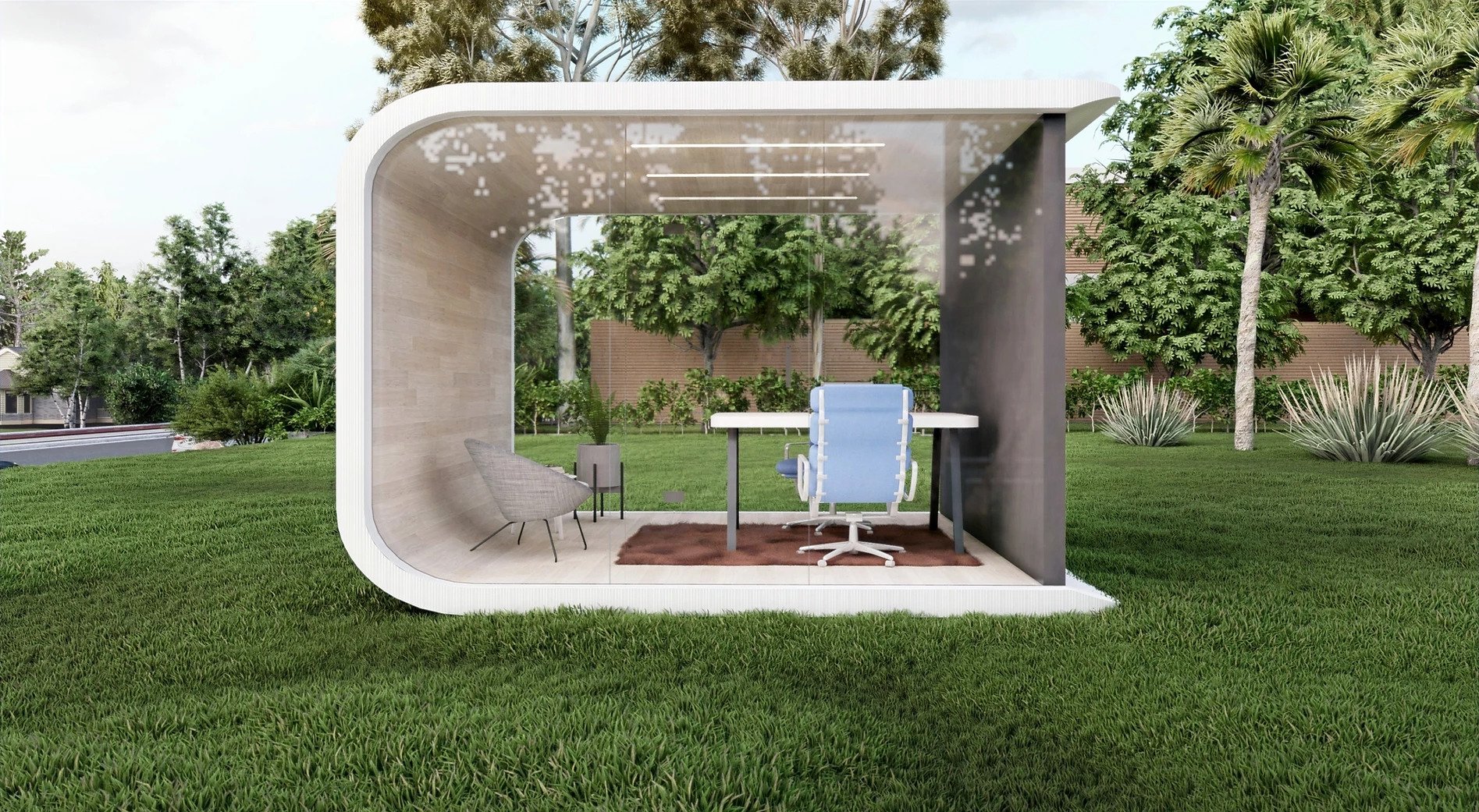Azure Printed Homes has reportedly become the first construction 3D printing company to repurpose plastic waste as a primary home building material.
The firm is seeking to redefine the notion of sustainable building by reusing plastic destined for landfills or incineration in favor of typically-used concrete, in a bid to “close the loop” within the 3D home building industry.
The firm has now announced the opening of its new 15,000 square foot factory in California to house its custom-built construction 3D printer, which is capable of producing backyard studios, accessory dwelling units (ADUs) and, eventually, full-sized homes.
“The construction sector is the largest global consumer of raw materials, responsible for approximately 20 percent of the world’s total carbon emissions,” said Gene Eidelman, Co-founder of Azure Printed Homes.
“Our responsibility to our customers and to future generations is to use the most sustainable practices imaginable.”

3D printing plastic homes
The construction industry has, on the whole, used many of the same building techniques for decades, often leading to projects being delivered over budget and behind schedule, while also producing vast amounts of waste.
Eidelman and fellow Co-founder Ross Maguire launched Azure Printed Homes in 2019 with the goal of developing homes faster, more economically, and with less of an environmental impact.
The company’s technology combines its large-scale robotic 3D printers with recycled plastic polymers as feedstock in order to prefabricate studios, offices, ADUs and homes 70 percent faster and 20-30 percent cheaper than existing construction methods, the firm claims.
More than 60% of the firm’s print material comes from recycled plastic, specifically a plastic polymer that is most commonly used in the production of plastic bottles and food packaging.
Customers can design and customize their studio or ADU through Azure’s website, choosing their preferred colors, finishes, and details through the firm’s 3D configurator. The company then 3D prints the unit in less than 24 hours before it is assembled, shipped to the customer, and installed.
The firm’s robotic 3D printers are capable of producing backyard studios spanning 120 square feet while its ADUs will range from 450 square feet to 1,000 square feet.
“We have created production efficiencies not only by capitalizing on the advances in 3D printing but by creating a design and process that is completed in only 12 hours,” said Maguire. “When compared with conventional construction, we produce the entire structural skeleton, the exterior sheathing, the water control barrier, the exterior finish, the passageways for utilities, and the grounding for interior finishes, in a fraction of the time and cost.
“By revolutionizing a new age of home building with our sustainable, automated and exact production processes, we see a very, very exciting future ahead.”
Upon the opening of its new factory, Azure Printed Homes is now accepting pre-orders for both its ADUs and backyard studios. The company plans to scale up its operations to begin 3D printing full-sized homes by 2023.
Making construction 3D printing more sustainable
The likes of WASP, COBOD, PERI Group and ICON have been pioneering the 3D printing construction space for some time, claiming the technology offers lower material wastage, improved process efficiencies, and can tackle the global affordable housing crisis more effectively than traditional construction techniques.
Leaders such as the Vice President and Prime Minister of the United Arab Emirates Sheikh Mohammed bin Rashid Al Maktoum have also made clear their ambitions for ramping up construction 3D printing to meet housing targets.
While leaders in the field hail construction 3D printing as being inherently more sustainable than conventional construction techniques, work is continually underway to further improve the materials used as feedstock and promote a more circular economy approach to house building.
For instance, construction 3D printing firm Advanced Intelligent Construction Technology (AICT) has explored the use of recycled aggregates within concrete 3D printing in order to produce what it claims is the world’s first 3D printed public park in Shenzen, China. In a similar vein, researchers from RMIT University recently developed a new eco-friendly 3D printable concrete material that uses recycled glass as an aggregate in order to improve circularity within concrete 3D printing.
Elsewhere, ETH Zurich announced it had managed to cut concrete usage by 70 percent using a newly developed foam 3D printing technology. Made from recycled waste, the printable foam can be used to print both functional stay-in-place and temporary recyclable formwork within which optimized concrete slabs can be cast.
Looking to the future of 3D printing, several additive manufacturing experts have cited construction 3D printing as an area to keep a keen eye on going forwards, particularly when linked to a growing emphasis on circular economy principles and repurposing waste.

Subscribe to the 3D Printing Industry newsletter for the latest news in additive manufacturing. You can also stay connected by following us on Twitter and liking us on Facebook.
Looking for a career in additive manufacturing? Visit 3D Printing Jobs for a selection of roles in the industry.
Subscribe to our YouTube channel for the latest 3D printing video shorts, reviews and webinar replays.
Featured image shows a render of one of Azure’s 3D printed ADUs. Image via Azure Printed Homes.



